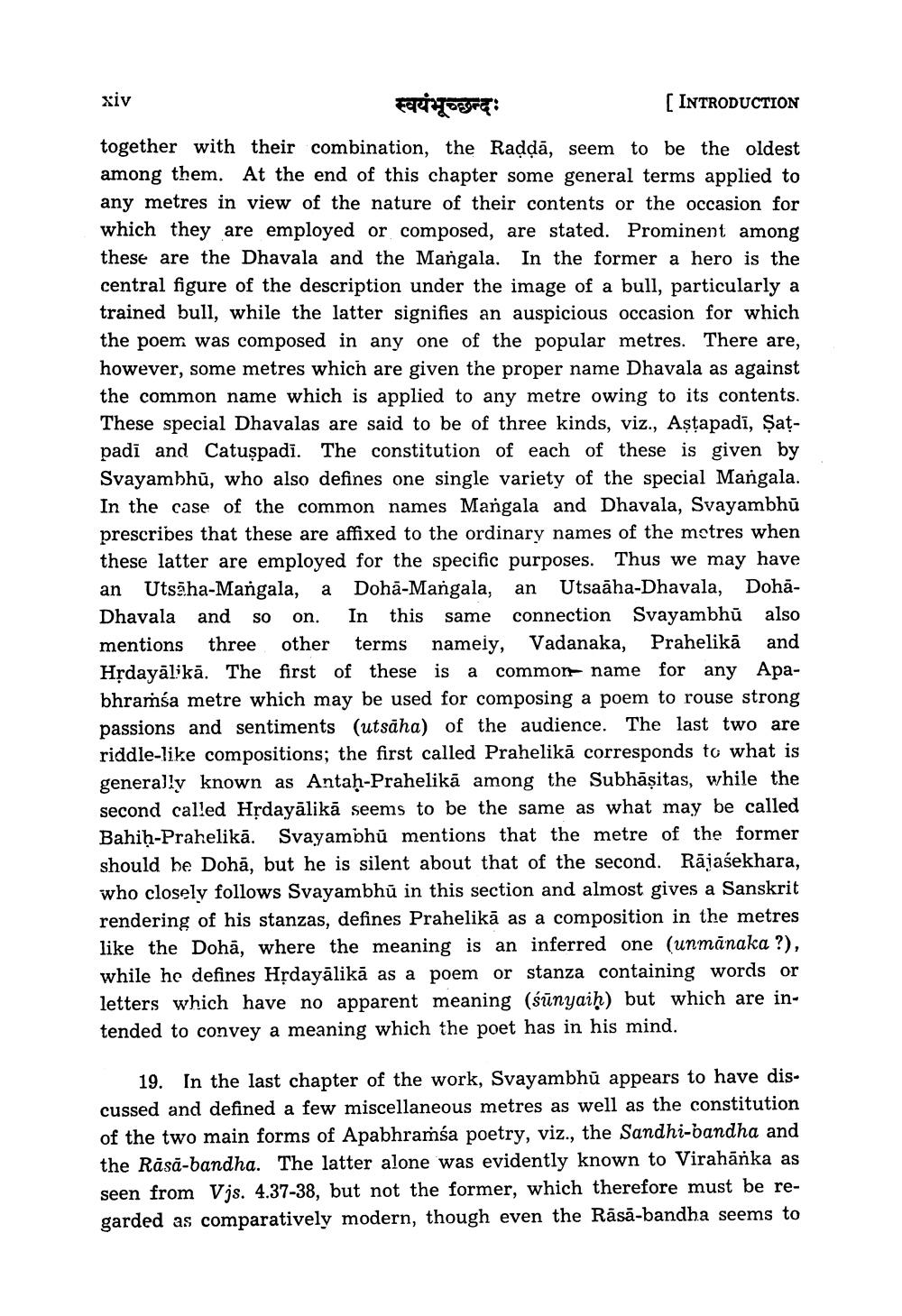________________
xiv
स्वयंभूच्छन्दः
[INTRODUCTION together with their combination, the Radņā, seem to be the oldest among them. At the end of this chapter some general terms applied to any metres in view of the nature of their contents or the occasion for which they are employed or composed, are stated. Prominent among these are the Dhavala and the Mangala. In the former a hero is the central figure of the description under the image of a bull, particularly a trained bull, while the latter signifies an auspicious occasion for which the poem was composed in any one of the popular metres. There are, however, some metres which are given the proper name Dhavala as against the common name which is applied to any metre owing to its contents. These special Dhavalas are said to be of three kinds, viz., Aştapadī, Satpadi and Catuşpadī. The constitution of each of these is given by Svayambhū, who also defines one single variety of the special Mangala. In the case of the common names Mangala and Dhavala, Svayambhū prescribes that these are affixed to the ordinary names of the metres when these latter are employed for the specific purposes. Thus we may have an Utsäha-Mangala, a Dohā-Mangala, an Utsaāha-Dhavala, DohāDhavala and so on. In this same connection Svayambhū also mentions three other terms namely, Vadanaka, Prahelikā and HỊdayālikā. The first of these is a common name for any Apabhramśa metre which may be used for composing a poem to rouse strong passions and sentiments (utsäha) of the audience. The last two are riddle-like compositions; the first called Prahelikā corresponds to what is generally known as Antah-Prahelikā among the Subhāṣitas, while the second called HỊdayālikā seems to be the same as what may be called Bahih-Prahelikā. Svayambhū mentions that the metre of the former should be Dohā, but he is silent about that of the second. Rājasekhara, who closely follows Svayambhū in this section and almost gives a Sanskrit rendering of his stanzas, defines Prahelikā as a composition in the metres like the Doha, where the meaning is an inferred one (unmānaka ?), while he defines HỊdayālikā as a poem or stanza containing words or letters which have no apparent meaning (sünyaih) but which are intended to convey a meaning which the poet has in his mind.
19. In the last chapter of the work, Svayambhū appears to have discussed and defined a few miscellaneous metres as well as the constitution of the two main forms of Apabhramsa poetry, viz., the Sandhi-bandha and the Rasa-bandha. The latter alone was evidently known to Virahānka as seen from Vjs. 4.37-38, but not the former, which therefore must be regarded as comparatively modern, though even the Rāsā-bandha seems to




